In December 2021, the West Turkana Archaeological Project (WTAP) in partnership with the Turkana Basin Institute, the National Museums of Kenya, and with support from the French government opened an exhibition in Nairobi to showcase the earliest stone tools in the world, found in Lomekwi, Turkana County in 2013.
In June 2022 the exhibition moved to Lodwar, where it is currently housed at Turkana University College’s amazing library building. The exhibition is open to the public and is designed to increase awareness of the diversity in Turkana’s incredible heritage.
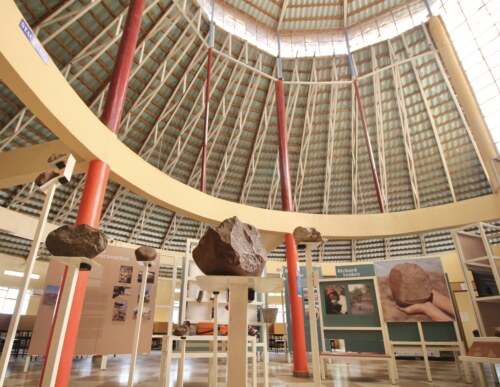
A replica of one of the 3.3 million year old Lomekwian tools in TUC’s beautiful library.
The exhibition consists of beautiful panels, showcasing information about the Lomekwi tools and site, as well as background information on key paleoscience concepts such as the relationship between interesting artifacts, fossils and the geological methods used for dating.
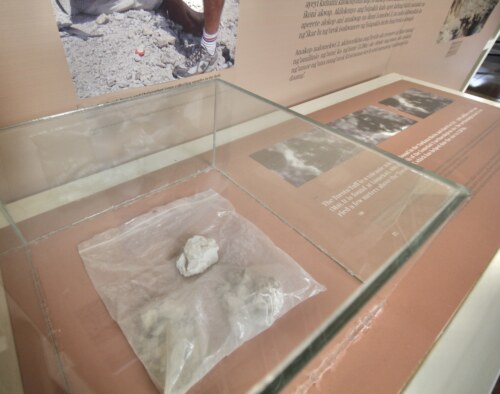
A critical element of palaeosciences in the Turkana Basin is volcanic tuff. This is a rock formed out of falling ash, which is used to date sediments in which artifacts and fossils are found.
All of the information is in English, Kiswahili and Turkana to increase accessibility. The exhibition shows everything that goes into a successful research project, from mentors, Hélène Roche and Richard Leakey, to the details of managing camp life and logistics.
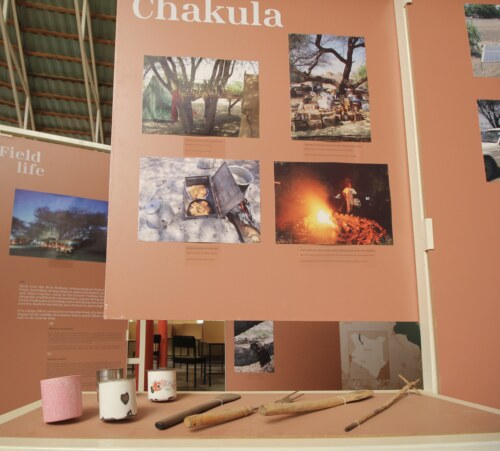
In order to do world class scientific research, WTAP has to ensure that everyone is fed, has clean water, power for equipment and is safe and comfortable while in the field. This is no mean feat.
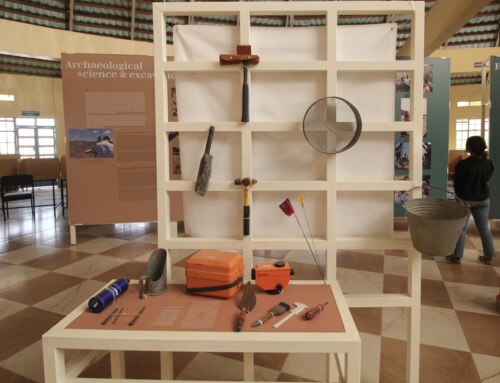
The sediment the Lomekwian tools are found is extremely hard, like concrete. It takes a lot of careful digging with specialized tools to safely extract the stone tools in context.
In addition to the panels, there are interactive installations, stone tool replicas that the public are allowed to handle, providing a tactile connection with the hominids who made the tools millions of years ago. There are also video screens, showing the area around the Lomekwi site, illustrating the removal of a flake from a Lomekwian core and introducing key members of the WTAP team, especially Sammy Lokorodi – who found the first Lomekwian tool.
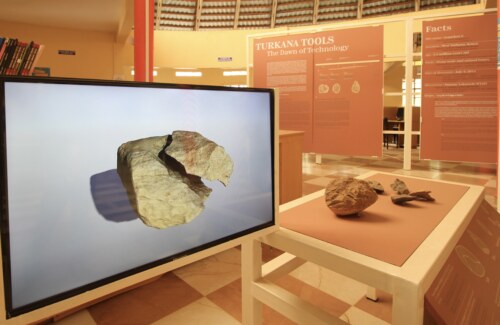
The Lomekwian tools consist of flakes, cores and hammer stones, in layman’s terms these are the shards of rock removed by the stone tool making process, the original piece of rock from which the flake is removed, and the stone used to make the impact. The screen showing the relationship between a core and flake found in situ at Lomekwi brings this concept to life.
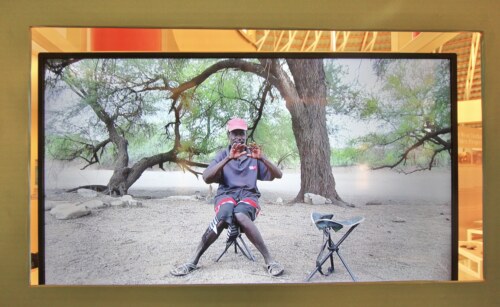
Sammy Lokorodi found the first Lomekwi tool on the surface at Lomekwi 3 after the WTAP team took a wrong turn while on an archeological survey. This video shows an interview of him talking about his experience.
This exhibition is part of the CONFMAP project – Consolidating the Future Through Mastering the Past – led by Sonia Harmand. This project also supports higher education in the palaeosciences (paleontology, archeology, paleobotany, geology) with an emphasis on increasing access for marginalized groups.
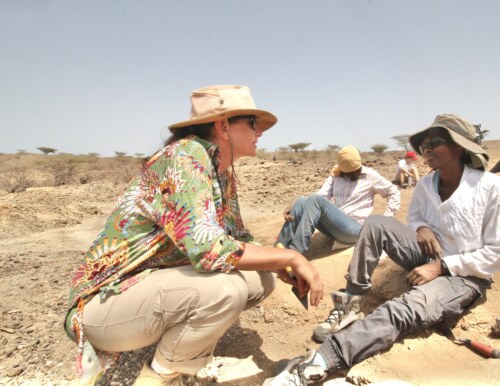
WTAP PI, Sonia Harmand talking with Medina Lubisa in the mid-excavation. Medina is currently completing her Masters in Human Evolution Biology at TUC while part of the WTAP team in Lomekwi.





